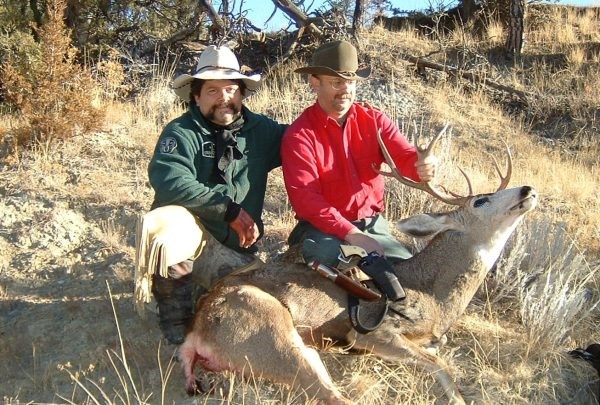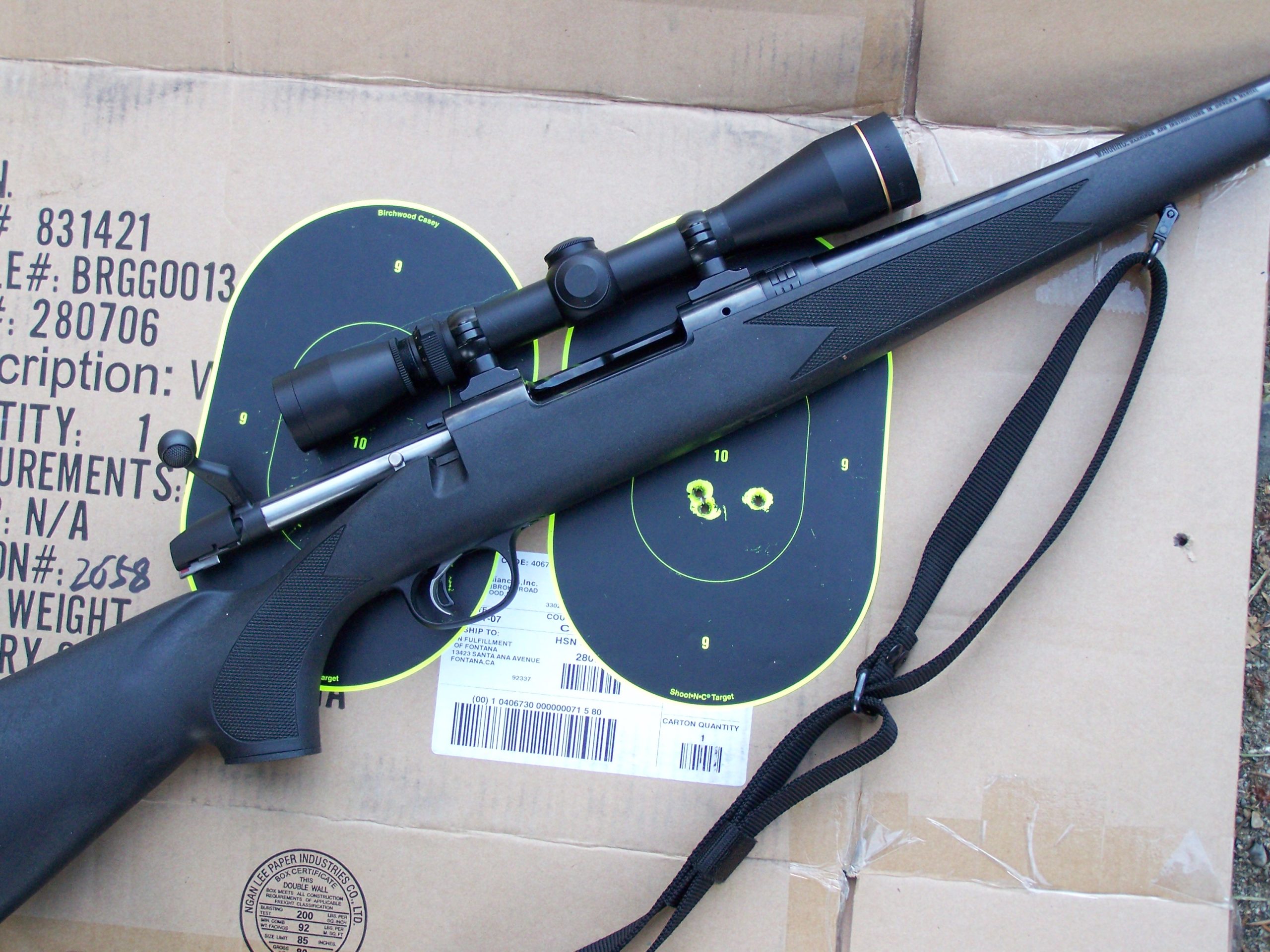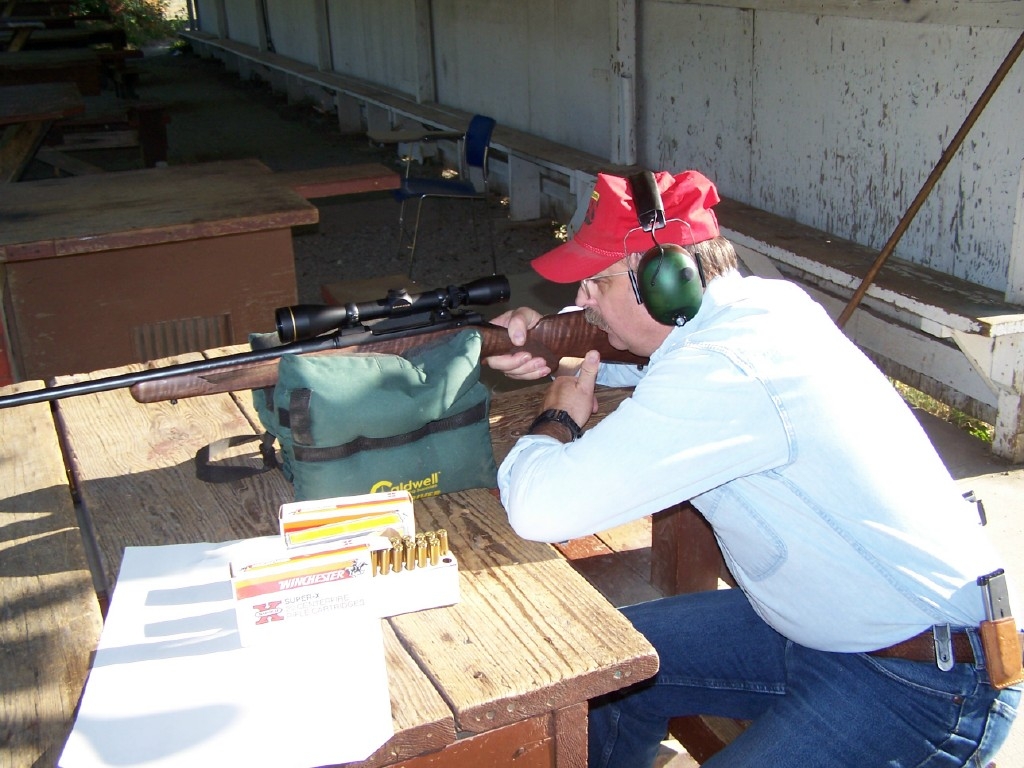
By Dave Workman
Editor-in-Chief
Summer is here, and there is no better time for hunters to be checking their favorite rifles and hunting handguns for accuracy, or to be breaking in a newly-purchased firearm, getting it zeroed and choosing the ammunition you will be using this fall.
I typically take a full day at the range to make sure each of my rifles still puts them where they count. Sights on a rifle—whether a scope or metallic sights—should remain true from one season to the next provided your rifles have been properly stored through the winter and not knocked around. Ideally, my rifles will be zeroed to shoot 2 ½ to 3 inches high at 100 yards, putting them dead on at 200-250 yards, depending upon the caliber and specific load I’m using, whether my .257 Roberts or a larger caliber such as .308 Winchester or .30-06 Springfield.

Some years back, my brother dropped off a rifle he had purchased used, and asked me to make sure it was properly sighted in. The rifle, a Ruger bolt-action chambered for the .308 Winchester, was a dandy. So, off to the range I went with about 40 rounds of ammunition; my handloads pushing either a 165-grain Nosler Ballistic Tip or 165-grain Hornady InterBond, both loaded over IMR 4895 powder with a CCI primer.
The rifle shot slightly low at 100 although the windage was good, so I cranked up the scope several clicks and fired a string of three shots. They produced a nice group, but still a little low, so a few more clicks brought the next group—fired after allowing the barrel to cool—up to where it needed to be.
During this exercise, I spotted an orange clay disk someone had left in place at the 200-yard berm, so I put the crosshairs on it and pressed the trigger. The disk vanished in a cloud of dust (it was a hot, dry day).
Mission accomplished. In the years since, my brother has anchored two nice bucks with that rifle, both at ranges well beyond 100 yards, using the same handloads, and he hasn’t touched the scope adjustment. Can’t beat that!

One of the advantages of doing this chore in the summer is the availability of long daylight hours. There may be nothing more enjoyable, in my humble opinion, than showing up at the range first thing in the morning when there isn’t likely to be anyone else around.
Or, make your visit in the evening hours when most other people will be home for dinner or out socializing after the workday.
Make sure you have a good rest, whether using a handgun or rifle, and space your shots out. There may be nothing worse than shooting a rifle until the barrel is so hot it cannot be touched. I typically fire a three-shot string and no more than five rounds before opening the action and placing the rifle vertically in a rack to allow the bore to cool.
The reason for this is simple: On opening day, or whenever else you shoot at game, it will be a cold-bore shot and you will want the conditions of your range work to be as close as possible to what will be experienced in the field.
From the Start
For those sighting in a new rifle, start with a target at 25 yards. Fire the three-shot string, open the action and check where your bullets have punched paper, and make any necessary sight adjustments for windage and/or elevation.

Move the target to 100 yards, fire another three-shot group and relax. Open the action and study the target to see where the group has landed. Make more sight adjustments as necessary. Once you are punching holes in the X-ring at 100—it shouldn’t take long or that many rounds—either leave the gun alone or adjust your sights for landing bullets at 200 yards or beyond.
This procedure has always worked for me when zeroing a rifle, whether using iron sights or a scope.
One should never keep shooting out of frustration. Accuracy could suffer and getting the barrel extremely hot is simply not good for the barrel. This is why I counsel people to use the long summer evenings for this exercise. You’re not under any pressure, you can take your time and make it a leisurely experience.
Once a rifle is properly sighted in, make sure it is cleaned and oiled. Then, a few days prior to the opener, go back to the range, confirm the zero to file a fouling shot, then head for hunting camp.
Target Choice
There all sorts of targets available, but I have grown very fond of Birchwood Casey Shoot-N-C and Caldwell targets which display bullet hits visibly at a distance.
For a more lifelike experience, one might also use full-size deer targets. They require a decent target stand but I’ve used them on occasion, and they add a little bit of realism to things.
If you take along a spotting scope or binoculars, it makes the process that much easier.
Of course, one can use traditional paper targets, which have worked fine for generations of riflemen and women.

Sandbags
There is nothing, in my opinion, which matches the utility of a good sandbag rest, unless you have more than one sandbag!
They are solid, they do not shift unless you do the shifting, and they are fairly easy to make at home using the cutoff legs of old denims. Stitch one end of the pantleg and then fill Ziplock-type plastic bags with sand or sawdust, or a combination of both. I suggest double-bagging to prevent leaking, and then slip the plastic bags into the pantleg and stitch it closed. These should last for many years if they’re not abused.
Using two or three of these bags helps steady the rifle, and I’ve even used sandbags both under the forend of a rifle and to steady the buttstock.
The goal is to make an accurate, humane first shot, because you may not get another.
Not only does this summer exercise at the range keep your rifle(s) ready for fall, it is also fun, especially if done with friends or family. Use these “lazy days of summer” to their full advantage, and you just might spend the winter feasting on venison, mountain goat, sheep, moose, caribou or bear.



